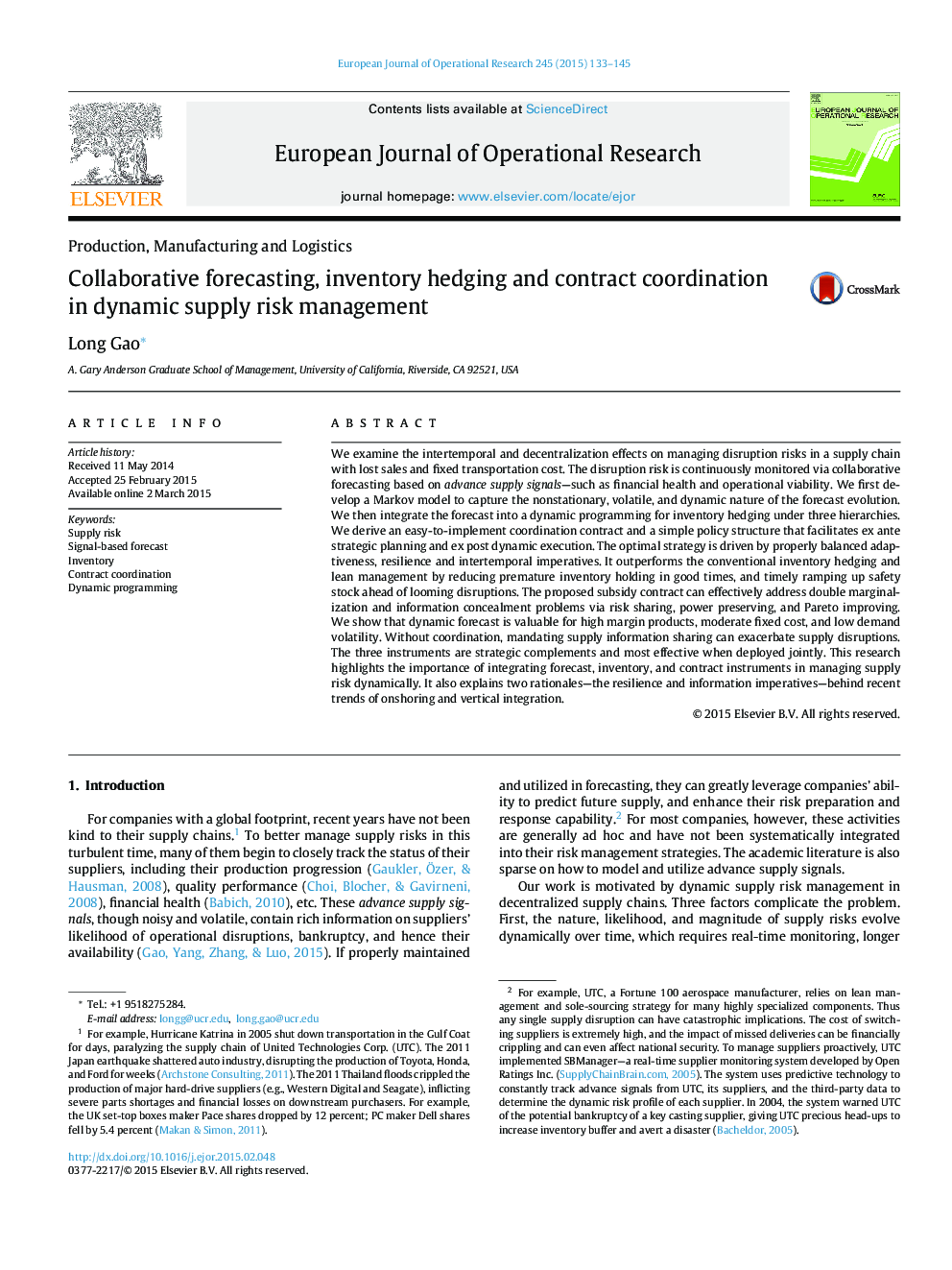| Article ID | Journal | Published Year | Pages | File Type |
|---|---|---|---|---|
| 479548 | European Journal of Operational Research | 2015 | 13 Pages |
•Examine the intertemporal effects on managing supply disruption risks.•Develop a Markov model to capture the dynamic nature of forecasting.•Characterize the optimal policy and propose a coordinating subsidy contract.•Quantify the value of three instruments and show they are strategic complements.
We examine the intertemporal and decentralization effects on managing disruption risks in a supply chain with lost sales and fixed transportation cost. The disruption risk is continuously monitored via collaborative forecasting based on advance supply signals—such as financial health and operational viability. We first develop a Markov model to capture the nonstationary, volatile, and dynamic nature of the forecast evolution. We then integrate the forecast into a dynamic programming for inventory hedging under three hierarchies. We derive an easy-to-implement coordination contract and a simple policy structure that facilitates ex ante strategic planning and ex post dynamic execution. The optimal strategy is driven by properly balanced adaptiveness, resilience and intertemporal imperatives. It outperforms the conventional inventory hedging and lean management by reducing premature inventory holding in good times, and timely ramping up safety stock ahead of looming disruptions. The proposed subsidy contract can effectively address double marginalization and information concealment problems via risk sharing, power preserving, and Pareto improving. We show that dynamic forecast is valuable for high margin products, moderate fixed cost, and low demand volatility. Without coordination, mandating supply information sharing can exacerbate supply disruptions. The three instruments are strategic complements and most effective when deployed jointly. This research highlights the importance of integrating forecast, inventory, and contract instruments in managing supply risk dynamically. It also explains two rationales—the resilience and information imperatives—behind recent trends of onshoring and vertical integration.
